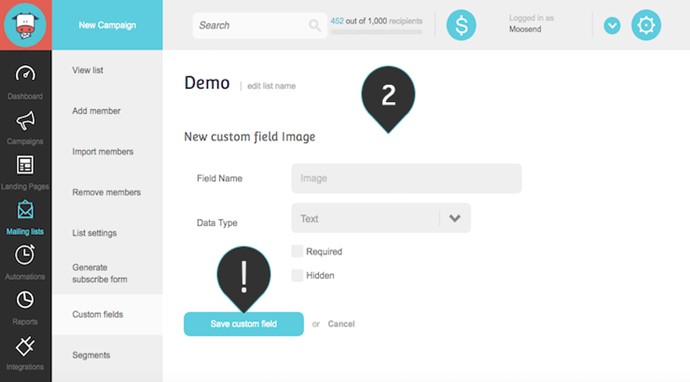It may not be obvious, but our job as marketers is to be creative. We have to consistently think of new ways to generate leads, convert those leads, and keep prospects engaged so that ours is the first company they think of when they're ready for a solution.
Marketing—email marketing, in particular—has to reinvent itself all the time to be more appealing. Being inventive and genuine while also being consistent in your brand's messaging can bring in more leads, conversions, and sales.
And although we use data to determine the hows and whys of our content and email marketing campaigns and to make them personal and personalized, we sometimes fall into the same old loop and familiar tactics.
That's where dynamic content comes into play.

What Is Dynamic Content?
Dynamic content is a personalization tool; an email's content changes depending on what person is viewing the email. But what exactly is the tool? How does it work? And how can you use it in your email marketing efforts to get better leverage and boost your marketing plan?
To create dynamic content, the first thing you need is data, because dynamic content changes in accordance with the personal details your recipients have shared with you upon signing up for your email list.
Not all ESPs can give you the opportunity to create content that changes according to the recipient, mainly because the function has everything to do with custom fields. Therefore, you'll need an email marketing solution that allows you to determine whether the recipient's behavior matches specific criteria that make them part of the segment you're targeting with your campaign.
Let's assume that you're a B2B e-commerce platform issuing offers on your services. It would be wise to showcase relevant offers and content only to those who need it—perhaps upsell content to customers in the lower tier, and present dedicated offers to those who have paid more.
Set up your content options like this:

(Source: Moosend)
After that, your email marketing tool will show relevant content to each recipient, based on which segment they're in.
Why Use Dynamic Content?
Dynamic content could be your first step toward a profitable conversion marketing funnel, where even the least interested of your contacts will see something that entices them. Because dynamic content boosts engagement by changing according to data, it could potentially predict a customer's desires and turn a one-time buyer into a dedicated customer.
Using dynamic content, your email campaigns show recipients exactly what they're interested in seeing and purchasing without their having to check out email text full of information, products, and offers that don't apply to them. That boosts your sales conversion rate and creates conditions under which your recipients are eager to receive and open your email marketing campaigns and click on your CTAs.
All that, in turn, builds the image of a brand that cares for them enough show them exactly what they want, when they want it.
How to Create Dynamic Content
Although the process is automated after setting up conditions (if/then criteria), dynamic content can potentially go wrong and cost you much-needed ROI and even cross-selling options. Here are two ways to avoid that.
1. Study your personas and fill in the gaps
You can't create custom content without first knowing the people you'd like to sell to. That's where customer or user personas come in to save the day.
To create user personas, study your data and take a good look at your audience. Whom are you likely to sell to? Who would never buy more than once? Who would never be a good fit as your customer?
Your social media audience, the people on the email list you've built, even the email marketing metrics you're tracking can give you much-needed information on how to build your customer personas, who is more valuable, and what type of content your personas would love—or love to hate.
Your customer personas can also help you "fill in the blanks" by providing data to help you understand the behavior of users with otherwise empty profiles. Just look at the segment they fall under, then use AI and machine-learning to distinguish patterns.
Plan carefully and track email metrics
Different user personas need different content that will look and feel tailor-made and personal. The whole point of dynamic content is for it to change according to the reader's needs, not to showcase the variety of your brand.
To achieve that, you'll need to keep technical details in mind. Be mindful of image sizes and the blocks you use on your email builder, and don't forget to test the look and feel of your email across various devices. You don't need to study data to know that broken elements are unattractive and can cost you conversion.
Always A/B-test and ensure your dynamic content changes according to the email metrics you're tracking. If your objective is a fantastic CTR, don't settle for a changing headline—look into product images. If you need more email opens, then maybe a custom field targeting the subject line will do the trick.
The Takeaway
Dynamic content is the most advanced form of hyper-personalization to date.
Everyone uses email marketing to sell. That's why marketers are looking for new and exciting ways to turn their email marketing campaigns into a true powerhouse for conversion, and also for brand exposure and increased authority and value.
Dynamic content can provide all of that.
More Resources on Dynamic Content in Email Marketing
Three Excellent Reasons for Adding Dynamic Content to Your Next Email




